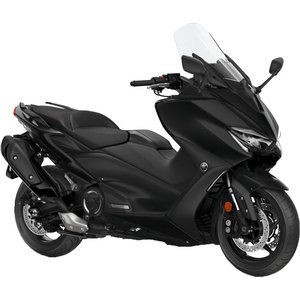Yamaha TMAX 560 (2020-2021) Review: The Apex Predator of Maxi-Scooters
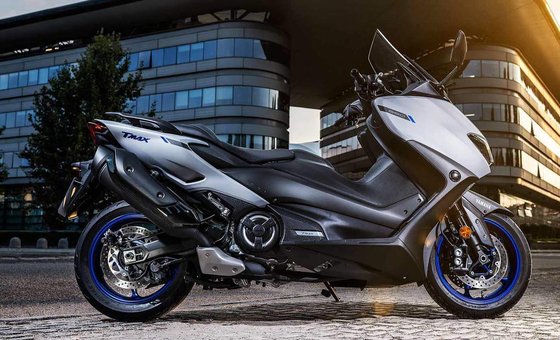
When Yamaha launched the original TMAX in 2001, it rewrote the rulebook for scooters. Two decades later, the 2020-2021 TMAX 560 generation proves why this machine remains the undisputed king of the "Sport Scooter" category. With its blend of motorcycle-grade engineering, luxury touring features, and urban practicality, the TMAX isn’t just a scooter—it’s a statement. After spending a week with the 20th Anniversary Edition and Tech MAX variants, here’s why this Yamaha continues to dominate roads and hearts.
Design & First Impressions: Where Aggression Meets Elegance
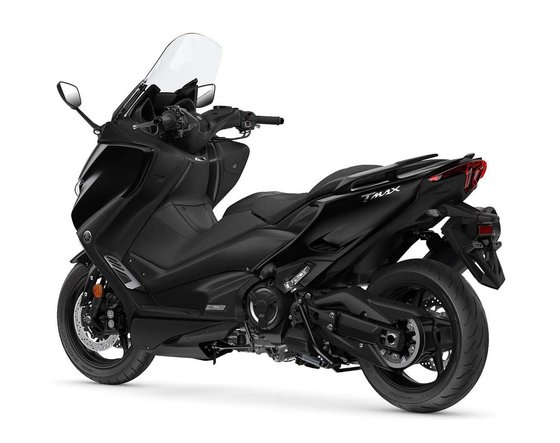
The TMAX 560 doesn’t just occupy space—it commands it. The 2020 redesign sharpened its lines, giving it a predatory stance with angular LED headlights, a slimmer tail section, and those signature "boomerang" side panels. On the 20th Anniversary Edition, forged carbon fiber accents on the fender, heat shields, and side panels add a touch of motorsport flair, while the Tech Kamo gray/bronze combo oozes understated sophistication.
At 220 kg (485 lbs), it’s substantial, but the aluminum twin-spar frame and forward-inclined engine keep the center of gravity low. Swinging a leg over the 800 mm (31.5") seat feels surprisingly manageable, even for shorter riders, thanks to the narrow waist. The redesigned pillion section makes passenger access easier, though the real star is the rider’s throne: heated, contoured, and stitched with yellow thread on the Anniversary model.
Engine & Performance: Twin-Cylinder Thunder
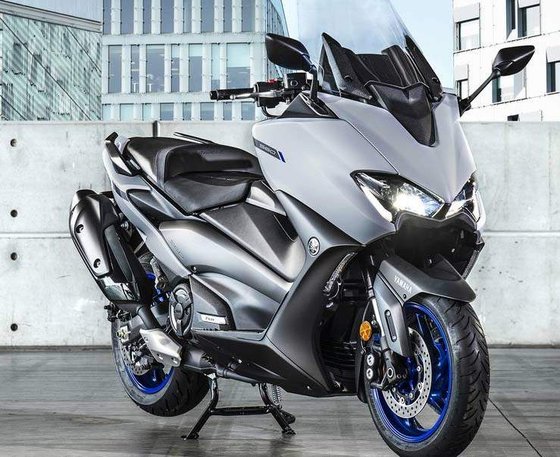
Specs at a Glance
- Engine: 562cc liquid-cooled DOHC parallel twin
- Power: 47 HP @ 7,500 RPM / 55.7 Nm (41 lb-ft) @ 5,250 RPM
- Transmission: V-belt automatic with D-Mode throttle mapping
Twist the throttle, and the TMAX shatters scooter stereotypes. The 562cc twin delivers a linear surge, with torque peaking early for effortless city pulls and a satisfying 140+ km/h (87 mph) cruising capability. Yamaha’s focus on "Kanno Hyoka" (emotional sound tuning) pays off—the 360-degree crank emits a throaty growl that’s more MT-07 than muffled commuter.
The CVT tuning is a masterclass. In "Standard" D-Mode, acceleration is brisk but civilized; switch to "Sport," and the RPMs hold longer, mimicking a manual gearbox’s urgency. Traction control (TCS) is unobtrusive, only intervening during aggressive wet-road starts. Fuel economy hovered around 4.8 L/100 km (49 MPG) during mixed riding, granting ~300 km (186 mi) from the 15L tank.
Ride & Handling: Motorcycle DNA in a Scooter Body
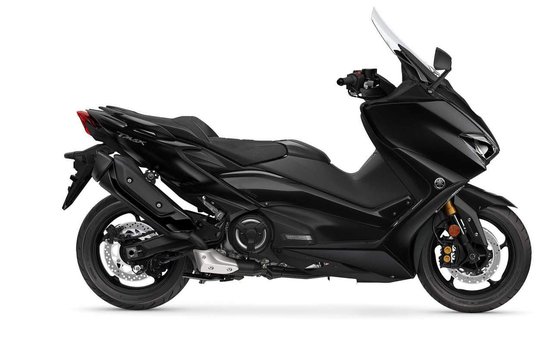
Chassis Highlights
- Front Suspension: 41 mm USD forks (gold on Tech MAX) / 120 mm travel
- Rear Suspension: Link-type Monocross / 117 mm travel
- Brakes: Dual 267 mm front discs, single 282 mm rear (ABS)
This is where the TMAX humbles skeptics. The aluminum frame and motorcycle-style suspension deliver razor-sharp feedback. Dive into a corner, and the TMAX leans with the poise of a sportbike, the 15-inch Michelin Road 5 tires offering tenacious grip. The ABS is faultless—panic braking from 100 km/h (62 mph) feels controlled, not jarring.
Urban maneuvering? Surprisingly agile. The wheelbase stretches 1,575 mm (62"), yet U-turns are manageable, aided by the flat floorboard. At highway speeds, the adjustable windscreen (manual on base models, electric on Tech MAX) deflects turbulence cleanly.
Features & Technology: Touring Luxury, Scooter Practicality
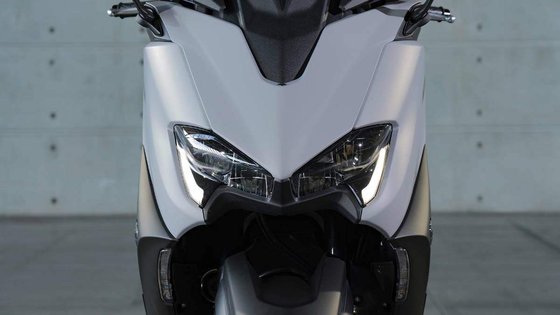
Yamaha packed the TMAX with tech that shames entry-level motorcycles:
- Keyless Ignition: Start the engine, unlock storage, and activate the center stand lock via fob.
- TFT Dash: Clear, if basic. Tech MAX adds smartphone connectivity (GPS, geofencing).
- Storage: Fits a full-face helmet under the seat (lit compartment).
- Cruise Control: A godsend on long highway stretches.
- Heated Everything: Grips and seats (Tech MAX/Anniversary) extend riding seasons.
The MyTMAX Connect app (Tech MAX) feels dated compared to modern TFT systems but nails essentials like trip logging and anti-theft alerts.
Competition: How the TMAX Stacks Up
1. BMW C 400 GT
- Pros: Lighter (204 kg), cheaper.
- Cons: Single-cylinder, less power (34 HP), plasticky feel.
Verdict: A commuter, not a tourer.
2. Honda X-ADV 750
- Pros: Adventurous styling, DCT gearbox, off-road pretense.
- Cons: Tall seat (820 mm), harsh low-speed throttle.
Verdict: For rebels; the TMAX is the refined urbanite.
3. Suzuki Burgman 650
- Pros: Armchair comfort, massive storage.
- Cons: Numb handling, dated design.
Verdict: Your grandfather’s maxi-scooter.
The TMAX Advantage: It’s the only maxi-scooter that thrills on a backroad yet coddles during a commute. The competition either prioritizes utility (Burgman) or niche appeal (X-ADV). Yamaha’s blend is unmatched.
Maintenance: Keeping Your TMAX in Beast Mode
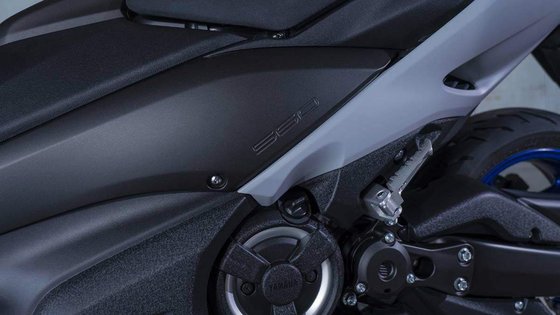
The TMAX is reliable but demands meticulous care:
- Oil Changes: Use 2.9L of SAE 10W-40 (API SG+) every 6,000 km.
- Belt Drive: Inspect every 12,000 km; replace at ~24,000 km.
- Cooling System: 1.8L of ethylene glycol coolant. Watch for pump leaks.
- Brakes: DOT 4 fluid changes every 2 years. Pad wear is moderate.
- Tires: 2.25 bar (32.6 psi) front / 2.5 bar (36.3 psi) rear (solo).
Pro Tip: The dry sump lubrication hates low oil levels. Check weekly!
Final Thoughts: The Scooter That Thinks It’s a Superbike
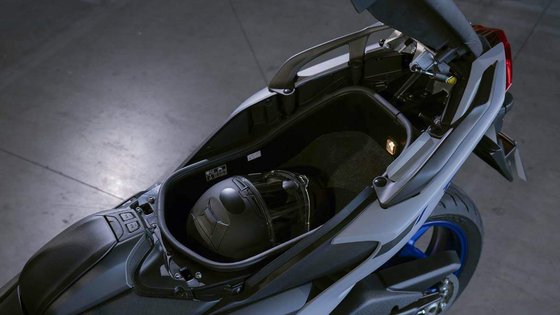
The 2020-2021 TMAX 560 isn’t just a scooter—it’s a gateway to motorcycling’s joys without the hassles. It carves canyons, devours highways, and coddles during grocery runs. For riders seeking one machine to rule all roads, the TMAX remains peerless. And with MOTOPARTS.store’s catalog of OEM-spec oils, belts, and upgrades, keeping this legend alive is a breeze.
Ride hard, ride smart, and let the TMAX redefine your two-wheeled world.

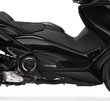

Specifications sheet
| Engine | |
|---|---|
| Stroke: | Four-stroke |
| Max power: | 35 kW | 47.0 hp |
| Max torque: | 56 Nm |
| Fuel system: | Fuel Injection |
| Max power @: | 7500 rpm |
| Displacement: | 562 ccm |
| Max torque @: | 5250 rpm |
| Bore x stroke: | 70.0 x 73.0 mm (2.8 x 2.9 in) |
| Configuration: | Parallel |
| Cooling system: | Liquid |
| Compression ratio: | 10.9:1 |
| Emission standard: | Euro 5 |
| Number of cylinders: | 2 |
| Valves per cylinder: | 4 |
| Dimensions | |
|---|---|
| Wheelbase: | 1575 mm (62.0 in) |
| Wet weight: | 220 |
| Seat height: | 800 mm (31.5 in) |
| Overall width: | 765 mm (30.1 in) |
| Overall height: | 1420–1475 mm (55.9–58.1 in) |
| Overall length: | 2200 mm (86.6 in) |
| Ground clearance: | 125 mm (4.9 in) |
| Fuel tank capacity: | 15 L (3.96 US gal) |
| Drivetrain | |
|---|---|
| Final drive: | belt |
| Transmission: | V-belt automatic |
| Maintenance | |
|---|---|
| Engine oil: | 10W40 |
| Brake fluid: | DOT 4 |
| Spark plugs: | NGK LMAR7G |
| Spark plug gap: | 0.7–0.8 mm |
| Coolant capacity: | 1.8 |
| Engine oil capacity: | 2.9 |
| Engine oil change interval: | Every 5000 km or 2 years |
| Valve clearance (intake, cold): | 0.10–0.20 mm |
| Valve clearance check interval: | 24,000 km (15,000 mi) |
| Valve clearance (exhaust, cold): | 0.20–0.30 mm |
| Recommended tire pressure (rear): | 2.5 bar (36 psi) solo, 2.8 bar (41 psi) with passenger |
| Recommended tire pressure (front): | 2.25 bar (33 psi) |
| Additional Features | |
|---|---|
| Comfort: | Heated grips, heated seat (20th Anniversary/Tech MAX), adjustable windshield |
| Storage: | Illuminated underseat storage (fits 1 full-face helmet) |
| Electronics: | Traction Control System (TCS), D-MODE, Cruise Control, Smart Key |
| Instrumentation: | Monotone TFT panel with speedometer, tachometer, and trip data |
| Chassis and Suspension | |
|---|---|
| Frame: | Aluminum twin-spar die-cast |
| Rear tire: | 160/60-15 |
| Front tire: | 120/70-15 |
| Rear brakes: | Single 282 mm disc, 1-piston caliper (ABS) |
| Front brakes: | 2 x 267 mm discs, 2-piston calipers (ABS) |
| Rear suspension: | Swingarm with link-type monoshock |
| Front suspension: | 41 mm USD forks (gold-colored on Tech MAX) |
| Rear wheel travel: | 117 mm (4.6 in) |
| Front wheel travel: | 120 mm (4.7 in) |



